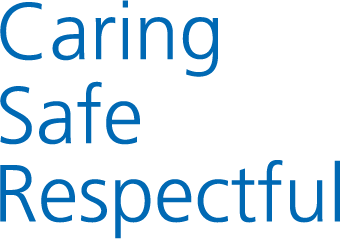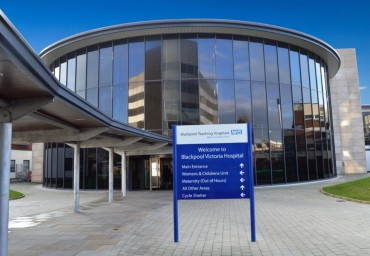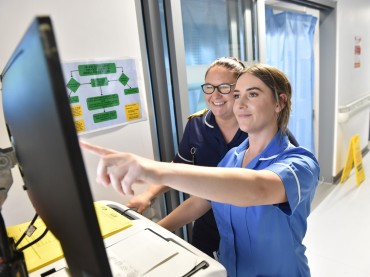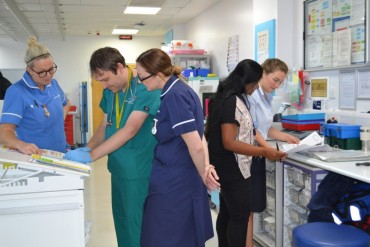Nuclear Medicine examinations are scans in which a small amount of radioactivity is used in order to take pictures of various parts of the body. The radioactivity or ‘tracer’ travels to the area of the body being examined. The tracer gives off gamma rays which are then detected with a special camera. Tracers are normally administered intravenously (into a vein in the hand, arm or foot). Some tests involve ingesting or inhaling a radioactive tracer.
A bone scan is a common procedure carried out in the Nuclear Medicine Department. A small amount of a radioactive tracer is injected into the bloodstream. The tracer will collect within the bones. Scans can be carried out at the time of injection or several hours after the injection. The number of scans carried out will vary, depending upon the kind of information needed. The areas where the radionuclide collects are called “hot spots” and may indicate the presence of conditions such as arthritis, malignant bone tumours, metastatic bone cancer, bone infections, bone trauma not seen on ordinary X-rays and other conditions of the bone.
A thyroid scan is used to assess the function of the thyroid gland. Again, this test involves an injection of a radioactive tracer into the bloodstream. The tracer will collect within the functioning thyroid gland. The scans taken can help to show if the thyroid gland is working properly.
This type of scan helps to identify the parathyroid glands which are normally located in the neck, although sometimes a parathyroid gland can be found anywhere in the upper chest. These glands help to regulate calcium levels in the body and also the parathyroid hormone levels. Nuclear Medicine is very good at detecting and localising abnormal parathyroid glands.
A myocardial perfusion scan is another common procedure carried out in Nuclear Medicine. The myocardial perfusion scan evaluates the heart’s function and blood flow.
The radioactive tracer used in this kind of scan is taken up (absorbed) by the healthy heart muscle tissue. On the scan, the areas where the radionuclide has been absorbed will show up differently than the areas that do not absorb it (due to possible damage to the tissue from decreased or blocked blood flow).
A stress myocardial perfusion scan is used to assess the blood flow to the heart muscle (myocardium) when it is stressed by exercise or medication and to determine what areas of the myocardium have decreased blood flow. The radioactive tracer is administered during the stress test.
The same test can be done at rest when the heart is not under any stress. Quite often a patient will have both a Rest Scan and a Stress Scan. Comparing both scans can help to determine if the heart is normal or if there is any permanent damage to the heart. Sometime further heart tests may be needed if the scan is abnormal.
This test helps to show the function of the kidneys. The radioactive tracer for this test travels to the kidneys as soon as it is injected into a hand or arm vein. Pictures are taken immediately using the gamma camera. Graphs are then produced from the scan data which show how well the kidneys function.
There are two kinds of lung scan, a perfusion and a ventilation scan. A perfusion scan looks at the blood flow to the lungs. This type of scan look s for blood clots on the lungs. The radioactive tracer is injected into a vein normally in the hand or arm. The ventilation part of the scan involves the patient breathing in a radioactive ‘gas’ through a tube or mask. This then shows up the air supply to the lungs.
Other areas of the body which can be examined using Nuclear Medicine imaging include;
- Gall bladder
- Liver
- Spleen
- Lymphatic system
- Digestive system
- Brain (not carried out at Blackpool Victoria)
There are also examinations which specifically look for certain types of tumour. In these cases the radioactive tracer is designed to be absorbed by the abnormal tumour cells. The whole body is then scanned to see which areas of the body show up on the scan.
Modern nuclear medicine gamma cameras normally have a CT scanner incorporated as well (two scanners in one unit). This means that as well as the gamma cameras taking pictures of the body, a CT scan can be performed on the same area. The two pictures can then be combined together in order to give much more valuable information about that part of the body. SPECT CT scanning is carried out routinely for scans such as heart scans, bone scans, parathyroid scans and others.
With all Nuclear Medicine procedures the amount of radioactivity used is always as low as possible. The radiation risk is very low as the doses involved with most diagnostic nuclear medicine procedures are very small, especially when this is compared to the potential benefits of the test.
For some scans, advice may be given about avoiding prolonged close contact with young children or pregnant patients. This is because a patient who has received a radioactive tracer injection is emitting radiation. The radiographer will be able to give advice about this. Everyday contact with people is normally perfectly acceptable. i.e. being in the same room as someone or travelling in a car or bus.
There may be some discomfort associated with the injection but this should not hurt more than a blood test. Some tests involve injections of tiny amounts of tracer just under the skin surface; these usually sting as the tracer is being injected.
It is very rare to have an allergic reaction to a radioactive tracer but it does happen occasionally. This may be a mild reaction such as reddening of the scan or a rash or more serious reactions such as anaphylaxis. This is an extremely rare occurrence. Some radioactive tracers can give a slight bitter or metallic taste as they are being injected but this is quite normal.
Patients who are pregnant or breast feeding must tell their Doctor / Nuclear Medicine Radiographer before having a Nuclear Medicine scan. Radiation exposure during pregnancy can be harmful to the unborn baby. For this reason, most Nuclear Medicine scans are not indicated if the patient is pregnant. However, one particular scan, a lung scan, can be carried out on a pregnant patient. In these cases the amount of radioactivity administered is reduced by half. The advantage of being able to diagnose (or rule out) a life threatening blood clot in the lung/s outweighs the risk from the small amount of radiation.
Breast feeding can normally continue following a Nuclear Medicine scan but an interruption period is advised. The Radiographer will give advice regarding this. The length of this interruption time depends on the type of tracer used. This is so that a breast-fed baby does not ingest radioactive breast milk.
Patients who are allergic to or sensitive to medications, contrast dyes, latex, etc should notify the Doctor or Radiographer prior to the examination.
Most patients will receive an information leaflet and appointment letter prior to their test. The information leaflet should be read carefully in case there are specific instructions to follow before the test. Preparation for the test could involve not eating or drinking for a certain length of time, or not having anything containing caffeine for 24 hours.
On arrival, patients are asked to report to X-ray Central Reception.
Most Nuclear Medicine tests involve an injection or administration of a radioactive tracer. The wait between this time and the scan can be 20 minutes to 3 hours. This will vary, depending on the type of test. This will usually be indicated on the appointment letter or leaflet. The Radiographer will also let you know what time/s your scan is due.
Most radioactive tracers will not make patients feel any different at all.
The scan time will vary between tests as well. Some scans take three minutes but others may take 40 mins or longer. There are certain scans which are carried out over several days. These involve patients coming for scans on more than one day. This is to look for changes in the distribution of the tracer over time.
Most scans are performed with the patient lying down but can sometimes be carried out sitting on a chair or even standing up. The ‘camera’ will normally be placed very close to the area of interest and may even rotate around the body during the scan.
There is usually no need to undress but metallic objects such as jewellery, belt buckles, bras, coins etc may need to be removed before the scan. This is so that these objects do not show up on the scan. Comfortable clothes are recommended.
After the scan, patients are advised that they can eat and drink normally. Drinking extra fluids for the rest of the day helps to flush the radioactivity out of their body. The rest will disappear naturally.
Avoid prolonged close contact with pregnant people and young children for the rest of the day to avoid exposing them to unnecessary radiation.
The results of the examination will not be given to you on the same day, but will be forwarded to your Consultant who will write to you or arrange an appointment.



